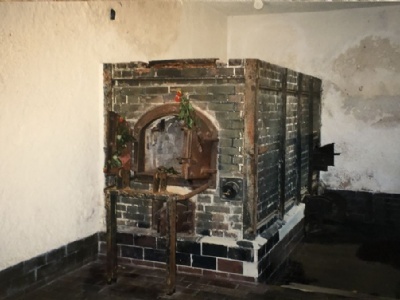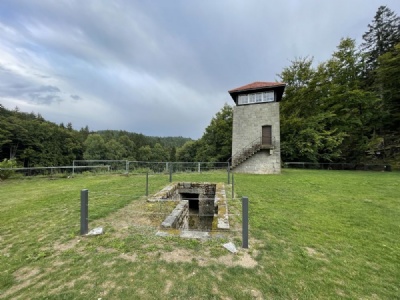Flossenburg
Flossenburg was a concentration camp established near the Czech border in 1938 on a hill with steep inclines. In the spring and summer of 1938, Hitler claimed a part of Czechoslovakia called the Sudeten. Hitler even threatened with war unless the Sudeten was incorporated into Germany. This camp was intended for those arrested in connection with the invasion of Czechoslovakia. However, the Munich agreement in late september hindered a new war from breaking out. In this agreement, Germany was given Sudeten and political opponents from this area were imprisoned in Flossenburg. Before the occupation of the remaining Czechoslovakia in March 1939, mostly asocial and criminal people were imprisoned in the camp.
After the outbreak of war, people from eastern areas/countires were the majority of the prisoners brought to Flossenburg. Most prisoners were forced to work in the nearby quarry, but prisoners also worked in one of the approximately 100 satellite camps belonging to Flossenburg, most of them producing war material. A special camp within the camp was built in 1941 for Soviet prisoners of war, most of whom were murdered. Although the camp was quite small in both area and number of prisoners, the life of the prisoners was no better than in any other camp. Of the 96,000 prisoners in the camp, some 30,000 died of starvation, work, maltreatment or being killed.
Several of the conspirators in the assassination attempt on Hitler’s life, 20 July, 1945, were murdered in Flossenburg, among others, Wilhelm Canaris, former head of the Abwehr, general Hans Oster, lawyer Karl Sack, theologian Dietrich Bonhoeffer and officer Ludwig Gehre, all executed on April 9, 1945. When the Americans liberated the camp on April 23, 1945, there were about 1,500 prisoners left in the camp. Before that, SS had evacuated 15,000 prisoners, young and old, in a march against Buchenwald and Dachau.
Current status: Partly preserved/demolished with museum (1998).
Address: Gedächtnisallee 5, 92696 Flossenburg.
Get there: Car.
Follow up in books: Kogon, Eugen: The Theory and Practice of Hell: The German Concentration Camps and the System Behind Them (2006).






















Immediately after the end of the war in Germany, small sporadic monuments were set up, usually on the initiative of the prisoners themselves. Dead prisoners were buried, ex-commandants, officers, guards and others who in some way committed crimes and were in captivity were brought to justice, some sentenced to death, others were sent to prison, some were acquitted or had their sentence shortened. Former prisoners began to start a new life and leave the passed behind, and Germany, during the Adenauer era, wanted to forget and move on.
This meant that what became West Germany (1949), the memory of the Second World War was not remembered as it was in Communist East Germany. Several monuments and museums were erected there, but with a clear political orientation where the Jews were marginalized or at best defined as anti-fascists.
The rise of the Cold War also contributed to the focus being more on the present than on the past, which meant that much of the Nazi history in West Germany lay dormant until the fall of the wall in 1989. Only then did the West Germany begin to take on its Nazi history and establish both monuments and highlight former concentration camps as part of the common German history. In East Germany, previous monuments and museums were revised and depoliticized, giving them a more correct historization. First in 1995 a museum began to be built at Flossenburg concentration camp where it’s history came into light. Preserved buildings were taken care of and ruins/foundations were uncovered.
Despite this, Flossenburg is overshadowed by Dachau in the state of Bavaria and is far less known than Dachau is. Dachau’s proximity to Munich also makes it easier to reach by, for example, commuter trains, while Flossenburg’s geographical location more or less assumes that you have access to a car. Many of the historic buildings are gone in Flossenburg and when I was there in 1998 it was still under construction. It is a moderately large museum with a mixture of demolished and preserved, the quarry where the prisoners worked as slaves remains just outside the camp and is a good complement to the museum.
Noteworthy is that residential buildings now occupies large parts of the former camp arena to the west and south and that a road cuts right through the former camp.